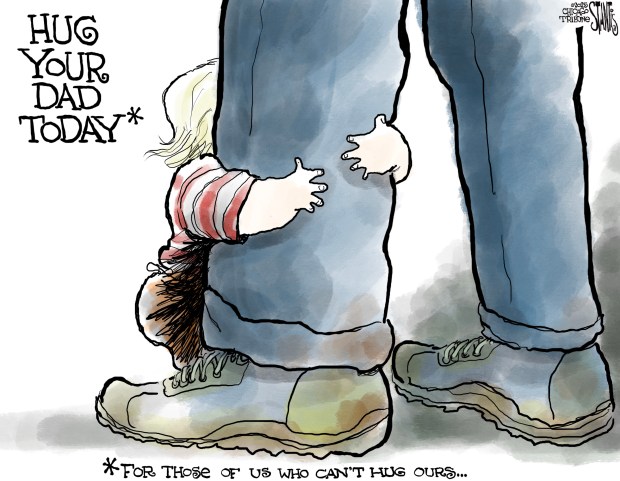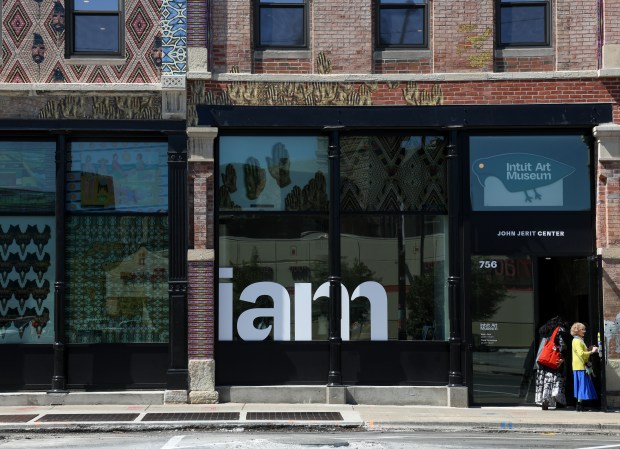If the world today feels particularly violent, that’s because it is. After generations of progress toward greater peace in the world, the past couple of years have seen that trend reverse. The most recent data on conflict, from the Uppsala Conflict Data Program, shows that 2022 and 2023 each saw more conflict than any year since the end of the Cold War.
At the same time, worsening climate change is fueling more extreme weather and deteriorating environmental conditions. These two factors have combined to create the biggest forced displacement crisis the world has ever seen.
As of mid-2023, 110 million people were forcibly displaced globally, according to the United Nations Refugee Agency. After relatively stable numbers since the fall of the Soviet Union, the march of displacement has been on a sharp trajectory upward. Those numbers have almost tripled since 2011.
Much of this increase is due to internal displacement, when people are forced to leave their homes but without crossing international borders. Most internally displaced people, or IDPs, are women and children who face high risk of abuse and exploitation. Many remain trapped between conflict zones and lack economic opportunities, education, basic health care or security.
A new report from the Internal Displacement Monitoring Center found that recent conflicts in Sudan, Gaza and the Democratic Republic of Congo accounted for almost two-thirds of new conflict displacement. Internal displacement has reached a record-breaking high of 75.9 million, up almost 50% from only five years ago.
The scale is alarming. Mass migration can carry destabilization elsewhere. Just consider the impact of Europe’s refugee crisis in 2015 on European politics. That year alone saw more than 1 million migrants enter Europe — more than a fourfold increase from 2014. Far right-wing nationalist parties thrived on fearmongering that was focused on migrants and gained a foothold in parliaments and in public attention that remains a threat to the European Union’s identity and values today.
Mass migration can be even more threatening to states that are politically, economically and institutionally weak. These countries are less resilient to shocks, so instability on the border can precipitate conflict within, perpetuating a vicious cycle that only increases displacement. This is, in part, what the world has been witnessing already.
But it’s important to look beyond just numbers. People who are displaced from their homes suffer immensely, and it’s rarely short term. Violent internal conflicts — the cause of most of today’s displacement — last about a decade on average. The uncertainty of war leaves hundreds of thousands in limbo. Rebuild your life elsewhere, or wait to return home?
Even once these conflicts end, the destruction and uncertainty remain. Many factors will prevent people from returning home. Often, homes have been destroyed, or others have moved in and taken claim. Depending on a conflict’s outcome, members of displaced communities may not feel safe or welcome to return. They may lack the financial capacity to rebuild their lives, or their homes may lack economic opportunity to do so. After years or even generations living elsewhere, frequently in makeshift camps with minimal amenities, many displaced families may simply have lost hope to try.
I spent time in refugee and IDP camps in Uganda, Kenya and South Sudan after South Sudan’s civil war broke out in 2013. As a U.S. Foreign Service officer, I took testimonials from hundreds of victims who fled to these camps to escape violence. It saddens me deeply to know that tens of thousands of these displaced people remain housed in camps to this day. Even as that war technically ended in 2020, the lack of accountability for the violence that drove them away means that many victims simply don’t believe they will be safe if they return. Much of that violence was committed by the government that remains in power today.
What I remember the most from the people I met was the look in their eyes. This was early in the war, when wounds and fear and dismay were still fresh. I expected anger and emotion. What I saw instead was simply a deep, unmistakable sadness for what they had seen and what they’d been forced to leave behind.
These people were resilient and determined as well — one would have to be to even reach these camps despite the obstacles and danger. I couldn’t help but wonder how one musters the courage to face each day with such uncertainty and trauma.
This kind of suffering was in decline until only recently, but today, it is unacceptably on the rise.
Consider how you would feel and react if you were forced from your home with no resources, safety net or certainty. Consider a person, a mother or father or child, bearing this burden and suffering this cost.
Now multiply that by 110 million.
If you aren’t alarmed by what those numbers mean for global security and stability, perhaps consider what it means for our humanity as well.
Elizabeth Shackelford is the Magro Family Distinguished Visitor in International Affairs at Dartmouth College and a foreign affairs columnist for the Chicago Tribune. She was previously a U.S. diplomat and is the author of “The Dissent Channel: American Diplomacy in a Dishonest Age.”
Submit a letter, of no more than 400 words, to the editor here or email letters@chicagotribune.com.




